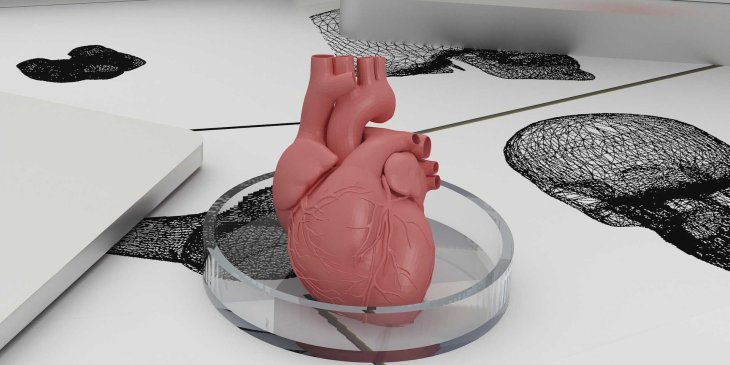Bioengineers Discovered New Breakthrough Technique To 3D Bioprint Organs
Anita - May 08, 2019

Bioengineers have conceived of a breakthrough technique for 3D bioprinting organ tissues, allowing doctors to create extremely entangled vascular networks.
- India’s First 3D-Printed Building With Indigenous Construction Materials
- KFC Plans To Make 3D-Printing Chicken And Add It To Their Menu
- Scientists Use Math To 3D Print The World's Strongest Steel
A breakthrough method to 3D print living tissues has been found by bioengineers. This technique helps scientists reproduce complicated vascular networks which are similar to the natural passageways of the body for lymph, air, blood and other vital fluids.

As per Jordan Miller, Head of Research and Bioengineering Assistant Professor from Rice’s Brown School of Engineering:

He continued:

Multivascularization plays an important role in this situation since function and form often go hand in hand.
Kelly Stevens, an investigator from the University of Washington Institute for Stem Cell and Regenerative Medicine (ISCRM) and assistant professor of bioengineering from UW College of Engineering, said.:

Transplanting organs business has been facing a lot of challenges. Initially, human transplants are impossible to meet a huge demand for organ transplants. In the U.S alone, on the transplant waiting lists, there are over 100,000 people who are still waiting. Moreover, patients who went through a transplant may still suffer from organ rejection and need to take drugs from immune suppression.
Bioprinting could theoretically handle above-mentioned problems by letting doctors produce 3D printed organs from the cells of a patient. Miller said:


In addition, the team also created a new open-source tech called "stereolithography apparatus for tissue engineering," or SLATE. This technology has been tested several times and yielded positive results.
For example, lung-mimicking structure tests showed that the tested tissues were strong enough to not burst during blood flow as well as pulsatile breathing. Besides, red blood cells are able to absorb oxygen when flowing through this complex 3D printed vascular network.
The researcher team not only carried out these above tests but also put 3D-printed tissues containing main liver cells into mice. These tissues ultimately survived following the implementation.
They now aim to explore more options. Miller explained:

Featured Stories

Features - Jul 01, 2025
What Are The Fastest Passenger Vehicles Ever Created?

Features - Jun 25, 2025
Japan Hydrogen Breakthrough: Scientists Crack the Clean Energy Code with...

ICT News - Jun 25, 2025
AI Intimidation Tactics: CEOs Turn Flawed Technology Into Employee Fear Machine

Review - Jun 25, 2025
Windows 11 Problems: Is Microsoft's "Best" OS Actually Getting Worse?

Features - Jun 22, 2025
Telegram Founder Pavel Durov Plans to Split $14 Billion Fortune Among 106 Children

ICT News - Jun 22, 2025
Neuralink Telepathy Chip Enables Quadriplegic Rob Greiner to Control Games with...

Features - Jun 21, 2025
This Over $100 Bottle Has Nothing But Fresh Air Inside

Features - Jun 18, 2025
Best Mobile VPN Apps for Gaming 2025: Complete Guide

Features - Jun 18, 2025
A Math Formula Tells Us How Long Everything Will Live

Features - Jun 16, 2025
Comments
Sort by Newest | Popular